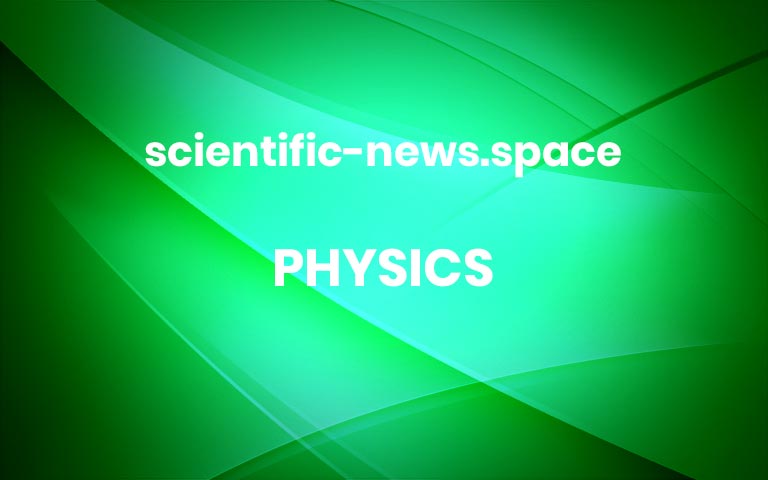A sapphire Schrödinger’s cat shows that quantum effects can scale up
In keeping with the grand tradition of tubby cats, a newly created quantum “cat” is particularly massive — at least for the quantum realm.
Scientists put a jiggling piece of sapphire crystal in what’s known as a “cat state,” in which an object exists in two different states simultaneously. It’s a situation reminiscent of physicists’ favorite imaginary feline, Schrödinger’s cat, known for being alive and dead at the same time.
The new sapphire cat is a relatively hefty 16 micrograms, physicists report in the April 21 Science. That’s close to half the mass of an eyelash, and more than 100 trillion times the mass of cat states previously created with molecules. “We’ve reached a new regime where quantum mechanics apparently does work,” says physicist Yiwen Chu of ETH Zurich.
.email-conversion {
border: 1px solid #ffcccb;
color: white;
margin-top: 50px;
background-image: url(“/wp-content/themes/sciencenews/client/src/images/cta-module@2x.jpg”);
padding: 20px;
clear: both;
}
.zephr-registration-form{max-width:440px;margin:20px auto;padding:20px;background-color:#fff;font-family:var(–zephr-typography-body-font), var(–zephr-typography-body-fallbackFont)}.zephr-registration-form *{box-sizing:border-box}.zephr-registration-form-text > *{color:var(–zephr-color-text-main)}.zephr-registration-form-relative-container{position:relative}.zephr-registration-form-flex-container{display:flex}.zephr-registration-form-input.svelte-blfh8x{display:block;width:100%;height:calc(var(–zephr-input-height) * 1px);padding-left:8px;font-size:16px;border:calc(var(–zephr-input-borderWidth) * 1px) solid var(–zephr-input-borderColor);border-radius:calc(var(–zephr-input-borderRadius) * 1px);transition:border-color 0.25s ease, box-shadow 0.25s ease;outline:0;color:var(–zephr-color-text-main);background-color:#fff;font-family:var(–zephr-typography-body-font), var(–zephr-typography-body-fallbackFont)}.zephr-registration-form-input.svelte-blfh8x::placeholder{color:var(–zephr-color-background-tinted)}.zephr-registration-form-input-checkbox.svelte-blfh8x{width:auto;height:auto;margin:8px 5px 0 0;float:left}.zephr-registration-form-input-radio.svelte-blfh8x{position:absolute;opacity:0;cursor:pointer;height:0;width:0}.zephr-registration-form-input-color[type=”color”].svelte-blfh8x{width:50px;padding:0;border-radius:50%}.zephr-registration-form-input-color[type=”color”].svelte-blfh8x::-webkit-color-swatch{border:none;border-radius:50%;padding:0}.zephr-registration-form-input-color[type=”color”].svelte-blfh8x::-webkit-color-swatch-wrapper{border:none;border-radius:50%;padding:0}.zephr-registration-form-input.disabled.svelte-blfh8x,.zephr-registration-form-input.disabled.svelte-blfh8x:hover{border:calc(var(–zephr-input-borderWidth) * 1px) solid var(–zephr-input-borderColor);background-color:var(–zephr-color-background-tinted)}.zephr-registration-form-input.error.svelte-blfh8x{border:1px solid var(–zephr-color-warning-main)}.zephr-registration-form-input-label.svelte-1ok5fdj.svelte-1ok5fdj{margin-top:10px;display:block;line-height:30px;font-size:12px;color:var(–zephr-color-text-tinted);font-family:var(–zephr-typography-body-font), var(–zephr-typography-body-fallbackFont)}.zephr-registration-form-input-label.svelte-1ok5fdj span.svelte-1ok5fdj{display:block}.zephr-registration-form-button.svelte-17g75t9{height:calc(var(–zephr-button-height) * 1px);line-height:0;padding:0 20px;text-decoration:none;text-transform:capitalize;text-align:center;border-radius:calc(var(–zephr-button-borderRadius) * 1px);font-size:calc(var(–zephr-button-fontSize) * 1px);font-weight:normal;cursor:pointer;border-style:solid;border-width:calc(var(–zephr-button-borderWidth) * 1px);border-color:var(–zephr-color-action-tinted);transition:backdrop-filter 0.2s, background-color 0.2s;margin-top:20px;display:block;width:100%;background-color:var(–zephr-color-action-main);color:#fff;position:relative;overflow:hidden;font-family:var(–zephr-typography-body-font), var(–zephr-typography-body-fallbackFont)}.zephr-registration-form-button.svelte-17g75t9:hover{background-color:var(–zephr-color-action-tinted);border-color:var(–zephr-color-action-tinted)}.zephr-registration-form-button.svelte-17g75t9:disabled{background-color:var(–zephr-color-background-tinted);border-color:var(–zephr-color-background-tinted)}.zephr-registration-form-button.svelte-17g75t9:disabled:hover{background-color:var(–zephr-color-background-tinted);border-color:var(–zephr-color-background-tinted)}.zephr-registration-form-text.svelte-i1fi5{font-size:19px;text-align:center;margin:20px auto;font-family:var(–zephr-typography-body-font), var(–zephr-typography-body-fallbackFont)}.zephr-registration-form-input-inner-text.svelte-lvlpcn{cursor:pointer;position:absolute;top:50%;transform:translateY(-50%);right:10px;color:var(–zephr-color-text-main);font-size:12px;font-weight:bold;font-family:var(–zephr-typography-body-font), var(–zephr-typography-body-fallbackFont)}.zephr-registration-form-divider-container.svelte-mk4m8o{display:flex;align-items:center;justify-content:center;margin:40px 0}.zephr-registration-form-divider-line.svelte-mk4m8o{height:1px;width:50%;margin:0 5px;background-color:var(–zephr-color-text-tinted);;}.zephr-registration-form-divider-text.svelte-mk4m8o{margin:0 12px;color:var(–zephr-color-text-main);font-size:14px;font-family:var(–zephr-typography-body-font), var(–zephr-typography-body-fallbackFont);white-space:nowrap}.zephr-registration-form-response-message.svelte-179421u{text-align:center;padding:10px 30px;border-radius:5px;font-size:15px;margin-top:10px;font-family:var(–zephr-typography-body-font), var(–zephr-typography-body-fallbackFont)}.zephr-registration-form-response-message-title.svelte-179421u{font-weight:bold;margin-bottom:10px}.zephr-registration-form-response-message-success.svelte-179421u{background-color:#baecbb;border:1px solid #00bc05}.zephr-registration-form-response-message-error.svelte-179421u{background-color:#fcdbec;border:1px solid #d90c00}.zephr-recaptcha-tcs.svelte-1wyy3bx{margin:20px 0 0 0;font-size:15px;font-family:var(–zephr-typography-body-font), var(–zephr-typography-body-fallbackFont)}.zephr-recaptcha-inline.svelte-1wyy3bx{margin:20px 0 0 0}.zephr-registration-form-social-sign-in.svelte-gp4ky7{align-items:center}.zephr-registration-form-social-sign-in-button.svelte-gp4ky7{height:55px;padding:0 15px;color:#000;background-color:#fff;box-shadow:0px 0px 5px rgba(0, 0, 0, 0.3);border-radius:10px;font-size:17px;display:flex;align-items:center;cursor:pointer;margin-top:20px;font-family:var(–zephr-typography-body-font), var(–zephr-typography-body-fallbackFont)}.zephr-registration-form-social-sign-in-button.svelte-gp4ky7:hover{background-color:#fafafa}.zephr-registration-form-social-sign-in-icon.svelte-gp4ky7{display:flex;justify-content:center;margin-right:30px;width:25px}.zephr-form-link-message.svelte-rt4jae{margin:10px 0 10px 20px;font-family:var(–zephr-typography-body-font), var(–zephr-typography-body-fallbackFont)}.zephr-registration-form-progress-bar.svelte-8qyhcl{width:100%;border:0;border-radius:20px;margin-top:10px}.zephr-registration-form-progress-bar.svelte-8qyhcl::-webkit-progress-bar{background-color:var(–zephr-color-background-tinted);border:0;border-radius:20px}.zephr-registration-form-progress-bar.svelte-8qyhcl::-webkit-progress-value{background-color:var(–zephr-color-text-tinted);border:0;border-radius:20px}.zephr-registration-progress-bar-step.svelte-8qyhcl{margin:auto;color:var(–zephr-color-text-tinted);font-size:12px;font-family:var(–zephr-typography-body-font), var(–zephr-typography-body-fallbackFont)}.zephr-registration-progress-bar-step.svelte-8qyhcl:first-child{margin-left:0}.zephr-registration-progress-bar-step.svelte-8qyhcl:last-child{margin-right:0}.zephr-registration-form-input-inner-text.svelte-lvlpcn{cursor:pointer;position:absolute;top:50%;transform:translateY(-50%);right:10px;color:var(–zephr-color-text-main);font-size:12px;font-weight:bold;font-family:var(–zephr-typography-body-font), var(–zephr-typography-body-fallbackFont)}.zephr-registration-form-input-error-text.svelte-19a73pq{color:var(–zephr-color-warning-main);font-family:var(–zephr-typography-body-font), var(–zephr-typography-body-fallbackFont)}.zephr-registration-form-input-select.svelte-19a73pq{display:block;appearance:auto;width:100%;height:calc(var(–zephr-input-height) * 1px);font-size:16px;border:calc(var(–zephr-input-borderWidth) * 1px) solid var(–zephr-color-text-main);border-radius:calc(var(–zephr-input-borderRadius) * 1px);transition:border-color 0.25s ease, box-shadow 0.25s ease;outline:0;color:var(–zephr-color-text-main);background-color:#fff;padding:10px}.zephr-registration-form-input-select.disabled.svelte-19a73pq{border:1px solid var(–zephr-color-background-tinted)}.zephr-registration-form-input-select.unselected.svelte-19a73pq{color:var(–zephr-color-background-tinted)}.zephr-registration-form-input-select.error.svelte-19a73pq{border-color:var(–zephr-color-warning-main)}.zephr-registration-form-input-textarea.svelte-19a73pq{background-color:#fff;border:1px solid #ddd;color:#222;font-size:14px;font-weight:300;padding:16px;width:100%}.zephr-registration-form-input-slider-output.svelte-19a73pq{margin:13px 0 0 10px}.spin.svelte-1cj2gr0{animation:svelte-1cj2gr0-spin 2s 0s infinite linear}.pulse.svelte-1cj2gr0{animation:svelte-1cj2gr0-spin 1s infinite steps(8)}@keyframes svelte-1cj2gr0-spin{0%{transform:rotate(0deg)}100%{transform:rotate(360deg)}}.zephr-registration-form-input-radio.svelte-1qn5n0t{position:absolute;opacity:0;cursor:pointer;height:0;width:0}.zephr-registration-form-radio-label.svelte-1qn5n0t{display:flex;align-items:center;font-family:var(–zephr-typography-body-font), var(–zephr-typography-body-fallbackFont)}.zephr-registration-form-radio-dot.svelte-1qn5n0t{position:relative;box-sizing:border-box;height:23px;width:23px;background-color:#fff;border:1px solid #ebebeb;border-radius:50%;margin-right:12px}.checked.svelte-1qn5n0t{border-color:#009fe3}.checked.svelte-1qn5n0t:after{content:””;position:absolute;width:17px;height:17px;background:#009fe3;background:linear-gradient(#009fe3, #006cb5);border-radius:50%;top:2px;left:2px}.disabled.checked.svelte-1qn5n0t:after{background:var(–zephr-color-background-tinted)}.error.svelte-1qn5n0t{border:1px solid var(–zephr-color-warning-main)}.zephr-registration-form-checkbox.svelte-1gzpw2y{position:absolute;opacity:0;cursor:pointer;height:0;width:0}.zephr-registration-form-checkbox-label.svelte-1gzpw2y{display:flex;align-items:center;font-family:var(–zephr-typography-body-font), var(–zephr-typography-body-fallbackFont)}.zephr-registration-form-checkmark.svelte-1gzpw2y{position:relative;box-sizing:border-box;height:23px;width:23px;background-color:#fff;border:1px solid var(–zephr-color-text-main);border-radius:6px;margin-right:12px;cursor:pointer}.zephr-registration-form-checkmark.checked.svelte-1gzpw2y{border-color:#009fe3}.zephr-registration-form-checkmark.checked.svelte-1gzpw2y:after{content:””;position:absolute;width:6px;height:13px;border:solid #009fe3;border-width:0 2px 2px 0;transform:rotate(45deg);top:3px;left:8px;box-sizing:border-box}.zephr-registration-form-checkmark.disabled.svelte-1gzpw2y{border:1px solid var(–zephr-color-background-tinted)}.zephr-registration-form-checkmark.disabled.checked.svelte-1gzpw2y:after{border:solid var(–zephr-color-background-tinted);border-width:0 2px 2px 0}.zephr-registration-form-checkmark.error.svelte-1gzpw2y{border:1px solid var(–zephr-color-warning-main)}.zephr-registration-form-google-icon.svelte-1jnblvg{width:20px}.zephr-form-link.svelte-64wplc{margin:10px 0;color:#6ba5e9;text-decoration:underline;cursor:pointer;font-family:var(–zephr-typography-body-font), var(–zephr-typography-body-fallbackFont)}.zephr-form-link-disabled.svelte-64wplc{color:var(–zephr-color-text-main);cursor:none;text-decoration:none}.zephr-registration-form-password-progress.svelte-d1zv9r{display:flex;margin-top:10px}.zephr-registration-form-password-bar.svelte-d1zv9r{width:100%;height:4px;border-radius:2px}.zephr-registration-form-password-bar.svelte-d1zv9r:not(:first-child){margin-left:8px}.zephr-registration-form-password-requirements.svelte-d1zv9r{margin:20px 0;justify-content:center}.zephr-registration-form-password-requirement.svelte-d1zv9r{display:flex;align-items:center;color:var(–zephr-color-text-tinted);font-size:12px;height:20px;font-family:var(–zephr-typography-body-font), var(–zephr-typography-body-fallbackFont)}.zephr-registration-form-password-requirement-icon.svelte-d1zv9r{margin-right:10px;font-size:15px}.zephr-registration-form-password-progress.svelte-d1zv9r{display:flex;margin-top:10px}.zephr-registration-form-password-bar.svelte-d1zv9r{width:100%;height:4px;border-radius:2px}.zephr-registration-form-password-bar.svelte-d1zv9r:not(:first-child){margin-left:8px}.zephr-registration-form-password-requirements.svelte-d1zv9r{margin:20px 0;justify-content:center}.zephr-registration-form-password-requirement.svelte-d1zv9r{display:flex;align-items:center;color:var(–zephr-color-text-tinted);font-size:12px;height:20px;font-family:var(–zephr-typography-body-font), var(–zephr-typography-body-fallbackFont)}.zephr-registration-form-password-requirement-icon.svelte-d1zv9r{margin-right:10px;font-size:15px}
.zephr-registration-form {
max-width: 100%;
background-image: url(/wp-content/themes/sciencenews/client/src/images/cta-module@2x.jpg);
font-family: var(–zephr-typography-body-font), var(–zephr-typography-body-fallbackFont);
margin: 0px auto;
margin-bottom: 4rem;
padding: 20px;
}
.zephr-registration-form-text h6 {
font-size: 0.8rem;
}
.zephr-registration-form h4 {
font-size: 3rem;
}
.zephr-registration-form h4 {
font-size: 1.5rem;
}
.zephr-registration-form-button.svelte-17g75t9:hover {
background-color: #fc6a65;
border-color: #fc6a65;
width: 150px;
margin-left: auto;
margin-right: auto;
}
.zephr-registration-form-button.svelte-17g75t9:disabled {
background-color: #e04821;
border-color: #e04821;
width: 150px;
margin-left: auto;
margin-right: auto;
}
.zephr-registration-form-button.svelte-17g75t9 {
background-color: #e04821;
border-color: #e04821;
width: 150px;
margin-left: auto;
margin-right: auto;
}
.zephr-registration-form-text > * {
color: #FFFFFF;
font-weight: bold
font: 25px;
}
.zephr-registration-form-progress-bar.svelte-8qyhcl {
width: 100%;
border: 0;
border-radius: 20px;
margin-top: 10px;
display: none;
}
.zephr-registration-form-response-message-title.svelte-179421u {
font-weight: bold;
margin-bottom: 10px;
display: none;
}
.zephr-registration-form-response-message-success.svelte-179421u {
background-color: #8db869;
border: 1px solid #8db869;
color: white;
margin-top: -0.2rem;
}
.zephr-registration-form-text.svelte-i1fi5:nth-child(1){
font-size: 18px;
text-align: center;
margin: 20px auto;
font-family: var(–zephr-typography-body-font), var(–zephr-typography-body-fallbackFont);
color: white;
}
.zephr-registration-form-text.svelte-i1fi5:nth-child(5){
font-size: 18px;
text-align: left;
margin: 20px auto;
font-family: var(–zephr-typography-body-font), var(–zephr-typography-body-fallbackFont);
color: white;
}
.zephr-registration-form-text.svelte-i1fi5:nth-child(7){
font-size: 18px;
text-align: left;
margin: 20px auto;
font-family: var(–zephr-typography-body-font), var(–zephr-typography-body-fallbackFont);
color: white;
}
.zephr-registration-form-text.svelte-i1fi5:nth-child(9){
font-size: 18px;
text-align: left;
margin: 20px auto;
font-family: var(–zephr-typography-body-font), var(–zephr-typography-body-fallbackFont);
color: white;
}
.zephr-registration-form-input-label.svelte-1ok5fdj span.svelte-1ok5fdj {
display: none;
color: white;
}
.zephr-registration-form-input.disabled.svelte-blfh8x, .zephr-registration-form-input.disabled.svelte-blfh8x:hover {
border: calc(var(–zephr-input-borderWidth) * 1px) solid var(–zephr-input-borderColor);
background-color: white;
}
.zephr-registration-form-checkbox-label.svelte-1gzpw2y {
display: flex;
align-items: center;
font-family: var(–zephr-typography-body-font), var(–zephr-typography-body-fallbackFont);
color: white;
font-size: 20px;
margin-bottom: -20px;
}
In a quantum parable dreamt up in the 1930s by physicist Erwin Schrödinger, a cat is trapped in a box and, due to quantum effects, winds up alive and dead at the same time (SN: 5/26/16). This paradoxical scenario doesn’t happen in the real world. While quantum particles are capable of existing in two distinct states simultaneously — what’s called a superposition — those effects wash out for cat-sized stuff.
Quantum effects are typically confined to atoms, molecules and the like. The everyday world visible to human eyes doesn’t exhibit quantum properties. Scientists can coax certain tiny objects to display quantum features (SN: 4/25/18). But scientists don’t fully understand the border between the quantum and nonquantum realms.
“We really have only just begun to understand that intermediate regime,” says Benjamin Sussman of the University of Ottawa, who was not involved with the new study. “It’s of really profound interest to see how these quantum systems scale and how they behave.”
Cat states are a special variety of quantum behavior that come close to re-creating Schrödinger’s idea. They are superpositions of two states that are distinct according to the classical physics that describes the everyday world— like an alive or dead cat — rather than two states that exist only in the quantum domain, such as the energy levels of an atom.
In the new experiment, the researchers jiggled a portion of a sapphire crystal in such a way that its atoms moved in two directions at once. That’s a distinction that “captures the spirit” of Schrödinger’s cat, Chu says.
The jiggling was confined within a sliver of the crystal consisting of 100 million billion atoms. That’s large enough that, if extracted from the rest of the crystal, it would be visible to the naked eye, Chu says.
.subscribe-cta {
color: black;
margin-top: 0px;
background-image: url(“”);
background-size: cover;
padding: 20px;
border: 1px solid #ffcccb;
border-top: 5px solid #e04821;
clear: both;
}
Subscribe to Science News
Get great science journalism, from the most trusted source, delivered to your doorstep.
Still, the oscillations of the atoms were tiny, about a millionth of a billionth of a millimeter — not exactly the scale of everyday objects. Other demonstrations of cat states have demonstrated much larger spatial separation, despite being made up of fewer atoms.
In future work, Sussman says he’d like to see the researchers scale up not only the mass, but also the size of the oscillations. “That’s going to be really hard but will be really interesting.” More


